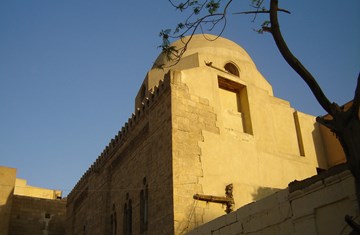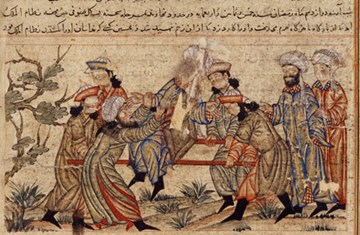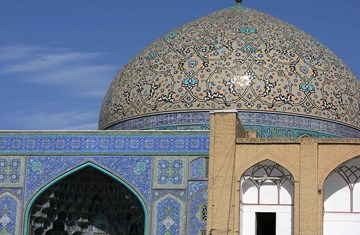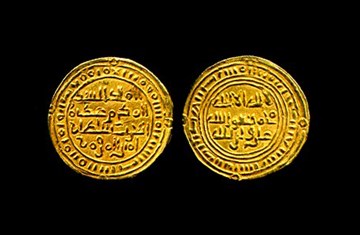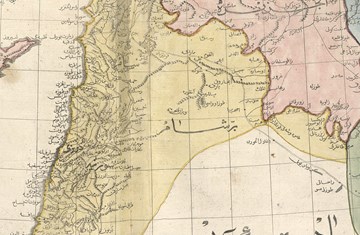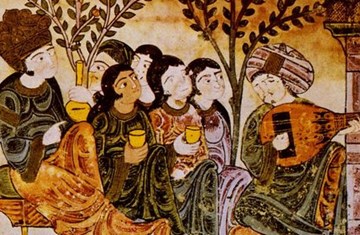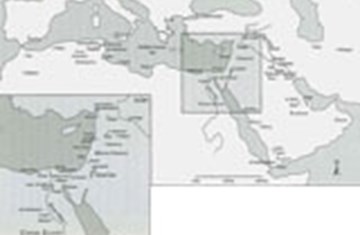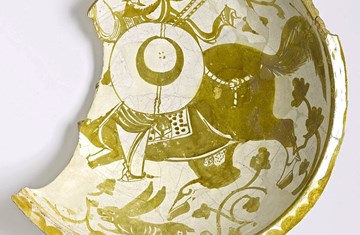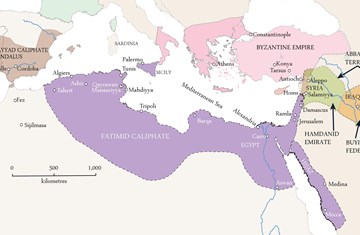Fatimid Art, Precursor or Culmination
This is an edited version of an article that was originally published in Ismaili Contributions to Islamic Culture, eds. Seyyed Hossein Nasr (1977), Imperial Iranian Academy of Philosophy, pp: 207-224
There were several occasions over the past decade for scholars with different specialities to interpret rather than describe the historical and cultural phenomenon of the Fatimids. At the time of the great colloquium celebrating Cairo’s first millennium, the late Gustav von Grunebaum, Professor Bernard Lewis, and I in a more limited sense, sought to identify the reasons for Fatimid successes, failures, or simply cultural or historical peculiarities.1 The late Marshall Hodgson’s controversial synthesis of Islamic history also provides novel interpretations of the Fatimids within what he called the Middle Islamic Period.2 And for several decades now Professor Goitein’s studies on the Geniza fragments have led him to a particularly wide range of conclusions and ideas about the Fatimid period.3 One of the reasons for this unusual interpretive concern is that few periods in Islamic history are as well and accessibly documented as the Fatimid; preserved chronicles are for the most part published, even if not to everyone’s satisfaction; the monuments of Cairo and of Egypt are known; works of art and artisanal creations can be found in books and articles, even if at times in arcane reviews; and a considerable amount of ancillary documents – coins, official letters, sales contracts, dowries, legal texts – is available, if not always incorporated into general history books.
But a more important reason may be that there is something unusual, puzzling about the Fatimids, as though they were an anomaly in the development of Islamic culture. At a time of localised, ethnocentric dynastic movements from Spain to Transoxiana, it was a pan-Islamic, Arab-centred but universal caliphate. It claimed universal religious and political power, but its most obvious legacy was the transformation of Egypt, at the time hardly Islamicised and economically exploited by others, into a major centre of Islamic culture. Instead of promoting a minor town like Ghazni, Tinmal, or Rabat into the temporary capital of an empire, it coalesced Cairo into one of the truly great metropolises of the Muslim world for more than a millennium and gave it an Egyptian rather than an Islamic character. It lived and prospered off an international, Indian and Mediterranean trade, but its political ambitions lay in Baghdad. Its literary and intellectual creativity was not comparable to contemporary activities in Spain, Iraq, or Khurasan, but its art was original and different from much of what is known elsewhere at the same time. And, as a last example of Fatimid peculiarities, the intensity of the dynasty’s religious and missionary zeal was at its most effective through the rule of Imam-caliph al Hakim (died in 1021 CE / 411 AH) and decreased thereafter, as was amply demonstrated by al
Basasiri’s failure in Baghdad in 1057-59 CE / 449-451 AH; but, weakened and at times battered, the Fatimid dynasty stayed in power for another century and more.
It is these paradoxes which have puzzled historians, and my purpose in this essay is to identify and explain the ways in which a study of the arts can contribute to their solution. I shall not try to be complete and thorough nor shall I discuss all possible ways of examining and interpreting the available material. My purpose instead is to develop general observations about the monuments and the texts dealing with them, especially Maqrizi’s invaluable Khitat4, in order to assess the originality of the Fatimids within Islamic art and culture.
The best known monuments of Fatimid architecture are all in Egypt: large mosques like the Azhar and Hakim mosques, small ones like al-Aqmar, or now-vanished ones like the Oarafa mosque which can be reconstructed with some degree of certainty; mausoleums in Cairo, Ous, and Aswan; palaces, either the great imperial ones within the walls of Cairo itself or pavilions all over the city, mostly known from literary sources and descriptions; fortifications, and ceremonial or functional gates.5
Several broad considerations are involved in understanding these buildings. One is the balance between indigenous Egyptian elements (some of which had been brought from Iraq during the ninth century) and imported ones. The latter are generally assumed to be North African for the early period of Fatimid history6 and northern Mesopotamian after the middle of the eleventh century.7 A second issue is the degree of originality of the forms and functions of Fatimid architecture. This is far more complicated to establish than drawing up a list of influences, and the whole question requires some elaboration. Only one architectural function is truly new in Fatimid times, even though its roots are older than the dynasty. It is the mausoleum, whose development certainly owed something to Shi‘ism but whose real sources are both secular and religious.8 Mosques, palaces, and even city walls existed before and, at least at first glance, the Fatimids continued to use the hypostyle mosque developed several centuries earlier. No evidence exists that their palaces were significantly different in shape from what can be assumed to have been the imperial urban palace type found in Baghdad, Samarra, or even Constantinople. Walls and city gates are fairly rare before the tenth century CE and Fatimid originality is more difficult to establish, but then city walls have a sameness of purpose and form which limits their value for architectural history.
Yet these rapid impressions of continuity in function are misleading, for changes were introduced which were quite far-reaching. Small mosques - al-Aqmar, Salih Tala’i, and several others listed by Maqrizi9 - were not simply miniaturised versions of large hypostyle ones but expressions of a shift in the patronage of public pious buildings from the central authority of the state to private sources. This became an irreversible change and, for several centuries thereafter, nearly all Muslim cities, and most particularly from Iraq to Morocco, acquired small private mosques and other pietistic monuments adapted to the physical reality of cities rather than imposed on them, and reflecting a plurality of pious ways rather than a single conception of the proper setting for the Muslim community.10 Functional changes in large congregational mosques are less immediately apparent, but Maqrizi shows that these monuments for the whole Muslim community became settings for major royal ceremonies with formal entries, official changes of vestments, incense burning, disappearance of caliphs behind curtains, chanting and processions;11 Whether these ceremonies survived the crisis of the middle of the eleventh century CE is not certain, but the concern for formality and ceremonial processions in most aspects of court life certainly went on and its unusual character within the Muslim tradition has been frequently discussed.12
If we turn to architectural forms, only one entirely new form appears in Fatimid times, the muqarnas. There is as yet no truly satisfactory explanation for its origins and there is some debate as to whether it is an eastern Iranian form imported into Egypt, a local creation, or, as is much less likely, a North African invention.13 The importance of the muqarnas lies in that, like the mausoleum and other small religious buildings, it becomes common in Fatimid times and remains a consistent feature of Islamic architecture for centuries to come. Another formal development with a similar although less well
defined history is the formal façade with a central, usually heavily decorated gate and with corner minarets. Decorated gates already existed in ninth century CE Western Islamic architecture, but it is in Tunisian Fatimid mosques that they became the main element of façade compositions. Roughly at the same time the Buyids of Iran appear to have initiated the same type of composition, if the Jurjir facade in Isfahan has been correctly dated and identified.14 The later development of façades with or without minarets needs no demonstration.
Two less well known instances of Fatimid activities can refine and sharpen an interpretation of their architectural concerns. The first one deals with the Haram al-Sharif in Jerusalem. The archaeological and cultural history of this extraordinary sanctuary has not yet been written, in spite of the huge available documentation.15 From inscriptions, texts, and from Nasir-i Khusraw’s superb description of the monuments, it is clear that, next to the Umayyads, the Fatimids were responsible for the most consistent building up of the Haram. It is true, of course, that the shortening of the city walls during the time of Imam-caliph al-Zahir and devastating earthquakes early in the eleventh century CE necessitated major reconstruction. But what is striking is their quality, as in the instances of the celebrated mosaics of the Aqsa mosque16 and of the western gate described by the Persian traveller. The mosaic technique of both monuments and the themes of decoration in the mosque are also striking for their traditional and archaising character, even though the pendentives of the Aqsa mosque are architecturally quite original. Nothing remains of the western gate, but, as it became the main entrance into the sanctuary, it stands to reason that it was a particularly majestic expression of Fatimid power. If we recall Imam-caliph al-Hakim’s destruction of the Holy Sepulchre and its subsequent rebuilding, for which the Byzantine emperor sent precious objects duly recorded by Fatimid chanceries,17 it can be concluded that, with a different script, the Fatimids replayed in Jerusalem the confrontation between Christian Byzantium and Islam which characterised Umayyad times and that, like their predecessors, they expressed it in monumental form.
The second example is less well documented. It involves Fatimid building activities in Mecca and Medina. As is obvious from the chronicles, Fatimid control over the two holiest sanctuaries of Islam was complicated by ‘Abbasid activities from Iraq, by local disturbances, and by Qarmatian incursions. Pilgrimages often had to be given up and were not usually very safe. But the formal assertion of Fatimid presence was emphasised by a large inscription on the Ka‘ba,18 and it is interesting to note that the ‘Abbasid inscription of al-Muktafi which replaced the Fatimid one in 1155 CE / 550 AH contains a very Shi‘i reference to the ‘Abbasid caliph’s “pure ancestors” and descendants.19 All these examples lead to the following model. Fatimid architecture is basically conservative and traditional. Most of it consists of established compositional and constructional elements and the dynasty’s concern for Mecca, Medina, or Jerusalem is a way to express their legitimacy, perhaps in the case of Jerusalem because it was more easily controlled than the Arabian holy places and had been a major centre of Umayyad architecture.20 Whatever the reasons, acceptance by the Muslim community could only be expected through the maintenance and occasional overhaul of old and known forms. Changes were of two kinds. One was the ceremonial use of mosques and other sanctuaries21 by the caliphs, a practice for which some evidence exists in Umayyad, ‘Abbasid, and Tulimid times, but never in the systematic manner of the Fatimids. This innovation did not last, but it is interesting to note that the ceremonial presence of the ruler in the mosque reappeared with the Ottomans, the last great Mediterranean Islamic dynasty. There were also formal changes. The mausoleum, the muqarnas, composed façades on religious buildings: all seem like minor innovations and none were invented under the Fatimids. Yet all were to become nearly universal fixtures of Islamic architecture and the question can be raised whether their adoption by the Fatimids did not compel their acceptance by the culture as a whole. Because of its automatic social connections, architecture lends itself more easily than other arts to the formulation of hypotheses about the historical and cultural meaning of a dynasty or of a time. With these hypotheses in mind, we can more easily turn to the other arts.
Much has been written about Fatimid painting, since Ettinghausen’s seminal article of more than thirty-five years ago,22 and many recently discovered fragments have been, rightly or wrongly, attributed to the Fatimid period.23 Their meaning is rarely very clear and their quality hardly consistent. The task of sorting out sketches from actual paintings, doodles from illustrations, folk drawings from courtly ones, early from late examples is, for the time being, well-nigh impossible. If one adds, as well one should, to the art of painting the many examples of lustre ceramics with very varied subjects,24 woodwork like the panels supposed to have come from the Fatimid palace,25 or ivories, metalwork, and sculpture26 with occasional representations of animals and personages, matters become even more complicated, as stylistic or iconographic judgements are affected by different techniques and different purposes. Furthermore, there is hardly a single dated painting or object. In fact only the paintings from the Cappella Palatina in Palermo, Sicily are datable to ca. 1140 CE/ 535 AH, a time when Fatimid culture was but the shadow of its former self.27 An art of painting can be assumed for earlier times, as several texts mention mural paintings in private houses, palaces, and mosques from the middle of the eleventh century, and the huge libraries of the caliphs almost certainly contained illustrated manuscripts, probably of far greater quality than whatever remains.28 None of these library references can be directly related to otherwise known paintings. Thus, except for the still incompletely interpreted Palermo paintings executed in a very special historical and cultural context, we lack for this huge body of documents some obvious interpretative key, some motif or idea from which one could imagine, at least in theory and hypothetically, that the rest can be understood.
Granting, then, a certain amount of methodological despair in dealing with this mass of uneven and unenlightening information, a number of observations can be made which are related to the hypotheses formulated around architecture. First of all the number of representations on all media attributed to the Fatimids is unusually high. The climate of Egypt and the relative security of a land free of destructive invasions for many centuries contributed, of course, to a better preservation of its possessions than anywhere else in the Muslim world. In spite of this, it is reasonable to conclude that the Fatimid wealth of motifs differs from that of other provinces of the Muslim world during the latter part of the tenth century and during the eleventh. Neither the few Iraqi or eastern Iranian ceramics with representations, nor the rather pitiful fragments of paintings from Nishapur or Lashkari Bazar, nor the stuccoes from Afrasiyab and Tirmidh, exhibit a comparable variety of subjects. And it is not possible to argue insufficient evidence, because the Egyptian phenomenon clearly demonstrates that, at a certain level of saturation, representations spread to almost all levels of artistic activity and would have left more traces than are actually found. In the twelfth century, on the other hand, all these regions except the Muslim west experience an explosion of representations of all types and in all media.29 From numerical evidence alone it is not possible to argue an impact of the Fatimids on the later arts of Iran or Anatolia, but it is curious that, once again, a Fatimid Egyptian novelty remains a characteristic of several subsequent centuries.
A second characteristic of the Egyptian remains is that their preservation is indiscriminate in the sense that the creativity of all classes of society has been preserved according to almost archaeological randomness. In fact, because of frequent lootings of caliphal establishments and the absence of coordinated excavations,30 the remains are probably more representative of the full range of Fatimid society than the finds of Samarra in Iraq or Madinat al-Zahra in Spain. Unfortunately, in spite of Professor Goitein’s pioneering studies, we cannot as yet provide a reasonable description of that society. We can, however, assume first of all that Fatimid society was pyramidal, with many more poor and simple people than rich and educated ones, and secondly that some correlation exists between an object’s technique and the social level which owned it or used it. But even this second assumption is debatable, as the ownership of an expensive item was then and is still now frequently the prerogative of the poor. The point is rather that the proper exploitation of the accidental preservation of large numbers of objects found in Fatimid art requires the identification and assessment of two variables: the social cost of a technique and the imaginative taste of a social group.31 Since neither variable has been investigated, we can only formulate the hypothesis that under Fatimid rule wider segments of society were able to express something of their taste, visual needs, or aesthetic requirements than ever before or than in any other part of the Muslim world. It is therefore all the more unfortunate that so few of the remaining monuments are dated or datable, for we cannot demonstrate whether the broadening of the social base of forms was a slow process, willed choice, or, as I have suggested in an earlier article, the more or less accidental result of the lootings in the middle of the eleventh century CE.32
A third characteristic of Fatimid representations, their style, has been discussed more frequently. Two aspects of that style have attracted particular attention. One is its sources. It has amply been demonstrated that Iraqi ‘Abbasid elements, local Egyptian folk ways, Hellenistic and ancient Egyptian memories, and important Byzantine artistic devices are all present. They are all easy to explain, as Iraq in the ninth century CE, was indeed the hub of the Muslim world and its styles had already penetrated into Egypt a century before the Fatimids, as Fatimid rule certainly fostered native self
awareness, as the growth of Egypt led to accidental or wilful rediscoveries of the country’s past monuments, and as Macedonian Byzantium was the most powerful rival as well as model and trading partner for the caliphs in Cairo. Most curious is the absence of a western Islamic or western Mediterranean influence in representational art, inasmuch as it is so prominent in architecture. This absence is perhaps more apparent than real, for in two limited instances a relationship between the Fatimids and the Muslim West is not excluded. One deals with sculpted ivories, where presumably Fatimid plaques like the ones in the Berlin museum may well have acquired their three-dimensionality and their misleading monumentality from the sculpted ivories of Cordova in the tenth century CE.33 The other example is that of metalwork – where Fatimid works are almost impossible to distinguish from western Islamic ones.34 Whether this difficulty should be explained quite simply by a commonality of forms between two Mediterranean centres or through the impact of one on the other is still a moot question. Altogether, the point about the sources of Fatimid representational art is their variety. It may simply reflect the formation of a new and wealthy centre of patronage, to which models and artisans come, on their own or invited, in expectation of commissions and successes. It may also mean that Fatimid culture never developed a single dominant style of its own but reflected, passively and accidentally or wilfully and consciously, traditions developed elsewhere.
The same difficulty of definition appears in the other frequently discussed aspect of Fatimid style, the character of its forms. It has been argued that two manners of representation coexisted. One, two dimensional and ornamental, emphasises patterns and is removed from physical reality. The other one is more unique; whether to be called realist, illusionist, or spatial, it utilises techniques of representation, largely of classical origin, which sought to suggest space and volume.35 It is tempting, as has been done more than once, to relate this second mode to several preserved texts which describe the naturalism of the works depicted by Fatimid painters. Whether these texts reflect actual reality of literary clichés, it seems reasonable to assume that the illusionism of some of the paintings corresponded to a genuine impulse for more natural forms than had existed before.
To define the historical importance of these stylistic, characteristics is more difficult than to identify or to describe them. If it is correct to date them to the second rather than to the first Fatimid century, then it may be legitimate to see them as forerunners of the realism which will appear in the latter part of the twelfth century CE and in the thirteenth, especially in the Arab art of the Fertile Crescent.36 But, if they are indeed forerunners, they are not so much formal ones as structural ones. They identify a related attitude toward representation rather than a similar manner of representation. It is under the Fatimids, it seems, that one discovers for the first time within the mediaeval Islamic tradition, a concern for the physical reality of the surrounding world. This judgement must remain a qualified one, as it is just possible that what appears today as a kind of realism was nothing more than the impact on Fatimid Egypt of Hellenistic forms with illusionist characteristics. There is yet another sense in which Fatimid styles can be considered as forerunners. Like the changes which occurred in the twelfth century CE art of Iran but one century earlier, Fatimid representations combined an unusual variety of artistic sources with a considerable range of quality and effectiveness. Although it has been argued that Fatimid artisans moved to Iran after the fall of the dynasty;37 their impact, if it existed at all, was probably limited to certain techniques like lustre and is difficult to argue for forms. Once again the Fatimid phenomenon is structurally rather than formally related to the later Iranian one.
If we turn to the subject matter of Fatimid art, somewhat similar conclusions emerge. Its purely royal level is hardly known except through texts. From Nasir-i-Khusraw’s description of the paintings in the main throne-room of the palace or from the lengthy lists of objects found in their treasures,38 the impression is that of masses of expensive “things” and curios like whole gardens of gold and silver, but not one of great ideological originality. The art of Muslim princes tended to emphasise the same subjects, and to my knowledge no evidence exists to show that the Fatimids tried to introduce into their art dynastic, religious, or personal symbols.39 Few Muslim princes did so.
Matters are quite different when we turn to other social levels. Since the variety of themes found on Fatimid paintings, woodwork, ivories, or ceramics is in the process of being investigated by several scholars, I shall limit myself to a few general and probably only temporarily valid remarks. Examples exist of illustrations of literary stories, common events, erotic topics, astrological symbols, princely activities, animals, possibly even Christian religious symbols. The range is comparable to the Iranian phenomenon of the following century, but, just as for styles, it is difficult to propose a direct filiation from Egypt to Iran. One explanation possibly valid for both areas is essentially a social one. The growth of a strong bourgeoisie, so clear from Professor Goitein’s research, would have created a more varied patronage than existed before and this patronage sought to express many more social, personal, ethnic, literary, sectarian, or other needs than the fairly consistent patronage of princes. Another explanation is that Egypt became, before Iran, a crossroads of international contacts and that the example of cultures with a rich imagery like India or the Christian world led to the development of Islamic representations, at a time when the historical justifications for a strict aniconism were no longer valid.
Before attempting to conclude this essay on the art of the Fatimids, two additional points need to be made. One deals with artisanal techniques. Without taking sides in the problem of Egyptian and Iraqi priority in developing lustre-painted ceramics, it is the Fatimids who first transformed this uniquely Islamic luxury technique into a vehicle for an unusual variety of styles and subjects. A more complicated problem is posed with rock crystal and its apparent derivative, the so-called Hedwig glass.40 Because of a small group of magnificent crystal objects with an early Fatimid date, scholarship has tended quite naturally to assign most remaining examples to the patronage of the Fatimid court or to direct imitations of its taste. This may indeed be correct, but literary sources clearly indicate that rock-crystal objects were made for many courts and it is perhaps more appropriate to consider the technique as a generally courtly one with accidentally preserved Egyptian examples. A very similar difficulty in identifying technical originality occurs in textiles. Textual information is plentiful and long lists exist of the elaborately decorated silks used at the Fatimid court and housed in its treasures.41 But at this stage of research it is impossible to identify these textiles from among the hundreds of remaining ones and, what is far more important, there is some uncertainty whether major luxury techniques were tied to specific centres of manufacture or were available at every important court.
These observations on the techniques of Fatimid art have one important corollary for our purposes. It is the near impossibility of defining a Fatimid technical originality. Perhaps there was none, as the eleventh century CE Muslim world had already developed in various places and for various reasons the major means for its artistic expression. In this respect, Fatimid art is at the end of a period of artistic growth. The twelfth century CE with its new centres in Iran, Iraq, and Anatolia will be quite different.
The last point concerns Fatimid ornament. It is almost impossible to generalise on this little-studied topic. Its greatest curiosity seems to be that it moved away from the total abstraction of Iraqi influenced Tulunid designs and preferred luxurious vegetal patterns or often naturalistic, even if fragmentary, animals, before becoming affected, in the twelfth century, like the rest of the Muslim world, with a fascination for complex geometric shapes.42 Liveliness and vivacity characterised the central period of Fatimid ornament.
Partial and incomplete though they are, the preceding remarks lead to conclusions on Fatimid art at three different levels. A first one is primarily local. Even though the North African and more generally western Islamic connections of Fatimid art become stronger and more interesting with every new excavation in Tunisia or investigation of a Maghribi technique;43 the most lasting impact of the Fatimids was on Egypt, whose social, economic and ecological character was irretrievably changed by the Fatimids. This is not to say that the peculiarly open symbiosis of different religious and ethnic groups so typical of most of Fatimid times was maintained over subsequent centuries. It is rather that this relatively open, mercantile system under the aegis of a spiritually committed dynasty consecrated the triumph of an Islamic taste in Egypt. However much we may know about the “things” owned by Jews, none of them seem to possess exclusively Jewish features and, even if there is some debate on the matter, it is apparently under the Fatimids that the art of Christian Egypt - what used to be called quite erroneously Coptic art - becomes a folk art. From this point of view the Fatimid period can be seen as the culmination of a long process, in which the Tulunid half-century served as a major forerunner. But Tulunid art relied a great deal on Iraqi models. The Fatimid period did borrow from elsewhere but also rediscovered local sources, as Hellenistic or even ancient Egyptian motifs reappeared.44 Yet, even on a local level, it cannot be seen merely as the end of a tradition; for, with the creation of the city of Cairo and the artisanal as well as commercial development of the whole country, it established the physical foundations of centuries of Egyptian history. This was made possible, I submit, by the imperial and universally Islamic vocation of the Fatimids. The early Muslims, the ‘Abbasid, and the Tulimids all created new urban establishments in a propitious part of the Nile valley, but it is the caliphal ambition of the Fatimids which transformed their own royal city into the catalyst which made the present Cairo possible.
A second level of Fatimid art is interesting and important for its time, but perhaps less significant for later developments. It may be called its Mediterranean level. From Byzantine models in forms and ceremonies to Fatimid-inspired paintings in Norman Sicily or to Romanesque objects, a Mediterranean “connection” is a constant aspect of Fatimid art, just as its society has been called Mediterranean. In part, of course, this is the practical result of Egyptian trade and of Fatimid sectarian liberalism. But it is curious to note the degree of consciousness of Mediterranean objects which permeates texts like the Kitab al-dhakha’ir or Maqrizi’s description of imperial treasures. Byzantine ambassadors made a major point of bringing fancy gifts to the court of Cairo and some of the greatest masterpieces of Fatimid art now in Venice came from Byzantium.45 The contrast is striking with the comparative paucity of objects from the Muslim East. It is difficult to decide whether this Mediterranean taste of the Fatimids was a conscious choice or simply the result of political failure in the East. The Crusades and the eventual victory of an eastern Islam altered the character of Egyptian taste, although traces of its earlier tendencies appear occasionally throughout Mamluk architecture.
Finally there is an Islamic, or Islamicate as Marshall Hodgson would put it, level of Fatimid art. It is the most fascinating and most puzzling one of all. As I tried to show earlier, Fatimid art is traditional in many ways and hardly inventive in techniques, types of objects, or architectural functions. Yet its innovations - the muqarnas, the mausoleum, representational art - are almost always forerunners of the great changes which swept most of the Muslim world in the twelfth century. One could argue, as has been suggested for mausoleums,46 that Fatimid novelties were picked up by the eventually dominant Sunni world and transformed into vehicles for their views and ideas. Since almost every one of these innovations was less a true invention of the Fatimids than a minor motif in the earlier art of the tenth century CE, one could further argue that they were from the very beginning expressions of a Shi‘i taste, a point which may find some confirmation in some parallels between the Fatimids and Buyids. Yet, on balance, I doubt that Fatimid art should be interpreted on sectarian grounds. A more plausible explanation of their originality may lie in the coincidence under their aegis of imperial ambitions, of a mercantile society, and of cultural self-confidence. The forms and techniques created over the previous centuries were sufficient for their aims and there no longer was any need to control or limit the endless range of individual self-expression. Fatimid art was both the culmination of the past and the forerunner of future developments, because Fatimid culture was a novel one in a newly developed Islamic land but its legitimacy lay in the past.
Author

Professor Oleg Grabar
The late Oleg Grabar, Professor Emeritus at the Institute for Advanced Study in the School of Historical Studies, had a far-reaching and profound influence on the study of Islamic art and architecture.
A native of Strasbourg, France, Grabar was born into an intellectual environment fostered by a highly-intellectual family that included his father, André Grabar, an eminent scholar in the field of Byzantine art. Oleg Grabar received his Ph.D in Oriental Languages and Literatures and the History of Art (1955) from Princeton University, thus beginning his his academic career at a time when there were few historians of Islamic art in the United States.
Now, Islamic art historians all over the world are indebted to Grabar‘s influence both as a teacher and as a thinker, author and teacher. During his first teaching post at the University of Michigan, Grabar earned a reputation as a superb undergraduate lecturer and seminar leader, and in 1969 was appointed Professor of Fine Arts at Harvard University where he taught for 21 years. He became the first Aga Khan Professor of Islamic Art and Architecture when that chair was established at Harvard in 1980, and upon retirement joined the Institute for Advanced Study in the School of Historical Studies becoming Professor Emeritus in 1998, where he devoted himself full-time to his research, writing and lecturing.
Professor Grabar is the author of more than thirty books and 120 articles in leading journals. His first book,The Coinage of the Tulunids(1957), focused on the ninth-century dynasty in Islamic Egypt. His seminal work however, remains The Formation of Islamic Art(1973), which evolved from lectures delivered in 1969 and were based on an article, “Earliest Islamic Commemorative Monuments,” in Ars Orientalis,a scholarly journal on Asian art and archaeology, that addressed the origins of Islamic art. This study was a defining one in the West and was translated into German, Spanish and Turkish, with expanded editions in French and English.
Oleg Grabar’s life remains a formidable legacy of inspiration. He held lectureships at institutions around the world and received all manner of awards in his lifetime. In 1996 he received the prestigious Giorgio Levi Della Vida Award (University of California at Los Angeles), awarded “to outstanding scholars whose work has significantly and lastingly advanced the study of Islamic civilization”.
He was the director of the American School of Oriental Research in Jerusalem(1960–61) later serving as the Schools’ Vice President (1967–75); a member of the American Academy of Arts and Sciences, the American Philosophical Society and the Medieval Academy of America; an honorary member of the Austrian Academy; the founding editor of the journalMuqarnas; from 1957–70, Grabar was Near Eastern Editor of Ars Orientalis, and a member of both the Steering Committee (1978-1988) and the Master Jury (1989) of the Aga Khan Award for Architecture. He received the College Art Association Distinguished Lifetime Achievement Award for Writing in Art (2005), the Charles Lang Freer Medal (2001. He was also a corresponding member of the Académie des Inscriptions et Belles-Lettres, Institut de France; and a corresponding fellow of the British Academy. He was fluent in English, French and Russian.
Among his best known works are The Formation of Islamic Art, The Illustrations of the Maqamat, The Alhambra, The Great Mosque of Isfahan, The Mediation of Ornament, Mostly Miniatures, The Shape of the Holy, The Dome of the Rock, Penser l’art islamique, and Masterpieces of Islamic Art: The Decorated Page from the 8th to the 17th century.
Oleg Grabar died in his home on January 8,2011 in Princeton, N.J. at the age of 81.
Endnotes
- G. von Grunebaum, “The Nature of the Fatimid Achievement”; B. Lewis, “An Interpretation of Fatimid History”; O. Grabar, “Imperial and Urban Art in Islam: the Subject Matter of Fatimid Art”; all in Colloque International sur l'Histoire du Caire, Cairo, 1972.
- M. Hodgson, The Venture of Islam, vol. II, Chicago, 1974, esp. pp. 21 ff.
- Most particularly S.D. Goitein, A Mediterranean Society, I, Berkeley, 1967.
- Maqrizi, Kitab al-mawa‘i; wa’l-i‘tibar bi-dhikr al-khitat wa’l-athar, Bulaq, 1853, 2 vols. Few Arabic texts need a new edition as much as this one. Additional important literary sources for the arts are Maqrizi, Itti‘az al-hunafa’; ed. Jamal al-Din al Shayyal, Cairo, 1967, and al-Qadi al-Rashid ibn al Zubayr, Kitab al-dhakha’ir wa al-tuhaf, ed. M. Hamidullah, Kuwait, 1959.
- Practically all these monuments are in K.A.C. Creswell, Muslim Architecture in Egypt, vol, I, Oxford, 1952.
- To the references found in Creswell, one should add A. Lezine, Mahdiyah, Paris, 1965.
- These are particularly evident in military architecture and in the growth of stone construction.
- O. Grabar, “Earliest commemorative monuments”, Ars Orientalis, vol. VI, 1966; some of my conclusions have been challenged by Y. Raghib, “Les premiers monuments funéraires de l’Islam”, Annales Islamologiques, vol. IX, 1970, and “Sur un groupe de mausolées du cimetiére du Caire”, Revue des Etudes Islamiques, vol. XL, 1972. For the most part, I will stand by my earlier interpretation.
- See especially Khitat, II, pp. 282 ff., 445 ff
- O. Grabar, “The Architecture of the City”, in I.M. Lapidus, ed., Middle Eastern Cities, Berkeley, 1969.
- Khitat, II, pp. 227 ff.
- M. Canard, “Le Cérémonial Fatimite et le Cérémonial Byzantin”, Byzantion, vol. XXI, 1951.
- Creswell, pp. 251 ff.; O. Grabar in R.N. Frye, ed., The Cambridge History of Iran, vol. IV, Cambridge, 1975, pp. 343 ff.
- A. Godard, “The Jurjir mosque”, A.U. Pope and Ph. Ackerman, eds., A Survey of Persian Art, vol. XlV, Oxford, 1967, pp. 3100-3.
- See S.D. Goitein and O. Grabar, al-Kuds, El2 (forthcoming). In the meantime, the only complete study of Islamic Jerusalem is Max van Berchem, Matériaux pour un Corpus Inscriptionum Arabicorum, Cairo, 1920-22. Out of date in a few details, it is still one of the true masterpieces of Islamic archaeology. Nasir-i-Khusraw, Sefer-nameh, ed. and tr. Ch. Schefer, Paris, 1881, repro 1970, pp. 66-99.
- H. Stern, “Recherches sur la Mosquée al-Aqsa”, Ars Orientalis, vol. V, 1963.
- Ibn al-Zubayr, pp. 72-8.
- Nasir-i Khusraw, pp. 202-3.
- Ibn Jubayr, Voyages, tr. Gaudefroy-Demombynes, Paris, 1949-53, p.109.
- It is of course true that a renewed pious involvement in Jerusalem began under the Ikhshidids, who were buried there.
- An interesting instance is that of the monumental activities around the finding of the head of Husayn in Asculon; its main remaining monument is the minbar now in Hebron. See M. van Bercham, “La chaire de la mosquée d’Hébron”, Festschrift E. Sachau, Berlin, 1915; and G. Wiet, “Notes d’epigraphie syro-musulmane”, Syria, Vol. V, 1924.
- R. Ettinghausen, "Painting in the Fatimid Period. A Reconstruction", Ars Islamica, vol. IX, 1942.
- Most up-to-date bibliography by E.J. Grube in B.W. Robinson and others, Islamic Painting and the Arts of the Book, London, 1976.
- Latest study with bibliography by E.J. Grube, Islamic Pottery . . . in the Keir Collection, London, 1976, pp. 126 ff.; for an interpretation see Grabar in Colloque. See also D. Jones, “Notes on a tattooed Musician”, AARP, vol. VII, 1975. 1975.
- E. Pauty, Les Bois sculptés, Cairo, 1931; G. Marcais, Mélanges d’Histoire et d’Archéologie, Alger, 1957, vol. I.
- See bibliography in Grabar, Colloque. For ivories E. Kühnel, Die lslamischen Elfenbeinskulpturen, Berlin, 1971. For other techniques, it is still necessary to consult museum and exhibition catalogues.
- U. Monneret de Villard, La Pitture Musulmane al soffitto della Cappella Palatina in Palermo, Rome, 1950. These paintings are about to be reinterpreted by Ms. Annabelle Cahn in a doctoral thesis at Columbia University.
- The main texts are Maqrizi, II, pp. 318,486-7; for libraries, see G. Wiet, “Recherches sur. les bibliothéques égyptiannes”, Cahiers de Civilisation Mediévale, vol. VI, 1963.
- O. Grabar, “Les Arts Mineurs”, Cahiers de Civilisation Mediévale, vol. XI, 1968; R. Ettinghausen, “The Flowering of Seljuq Art”, Metropolitan Museum Journal, vol. III, 1971.
- The recent Fustat excavations have only been partly published and bear more on earlier times. See the various reports by G. Scanlon in the Journal of the American Research Centre in Egypt.
- By social cost of a technique, I mean whatever an individual was willing to invest in order to own an object; beyond purely financial considerations, he certainly did consider such features as status, occasion, resale, and so forth. As to the imaginative taste of a social group, it consists of the shared memories which can be translated into visual terms and of the formal expectation of the translation.
- Grabar in Colloque.
- Kühnel, pI.XCVII.
- There is no easily accessible corpus of metal objects pertinent to our discussion. See Exhibition, Islamic Art, Cairo, 1969; and E. Dodd, “On the Origins of Medieval Dinanderie”, The Art Bulletin, vol. LI, 1969.
- R. Ettinghausen, “Early Realism in Islamic Art”, Studi Orientalistici in onore di Giorgio Levi della Vida, I, Rome, 1956; Grabar, Colloque, p. 181.
- R. Ettinghausen, Arab Painting, Geneva, 1962.
- Grube, Pottery, p. 210.
- Nasir-i Khusraw, p. 158; Maqrizi, I, pp. 408-25; P. Kahle, “Die Schätze der Fatimiden”, ZDMG, vol. LXXXIX, 1935.
- A possible exception occurs in the decoration of the Hakim mosque, Creswell, p. 104, but the evidence is not very clear.
- D.S. Rice, “A datable Islamic Rock Crystal”, Oriental Art, vol. II, 1956; B. Gray, “Thoughts on ... ‘Hedwig’ Glass”, Colloque.
- R.B. Serjeant, "Materials for a History of Islamic Textiles", Ars Islamica vols. IX ff, 1942 ff.; also the texts quoted in note 38.
- This ornament can best be studied in woodwork (see Pauty, Ope cit.), or in architectural decoration (Creswell).
- It is particularly unfortunate that so many Tunisian excavations have not been properly published; S.M. Zbiss, “Mahdia et Sabra-Mansaouriga”, Journal Asiatique, vol. CLXLIV, 1956; Lezine, Mahdiya. For ceramics, M. Jenkins, “Western Islamic Influences on Fatimid Egyptian Iconography”, Kunst des Orients, vol. X, 1975.
- Jones, AARP, vol. VII; E.J. Grube, “Studies in the Survival and Continuity of pre-Muslim traditions”, Journal of the American Research Centre in Egypt, vol. I, 1962. This whole problem permeates the existing controversies around the dating of the so-called “Coptic” textiles.
- With several students, I am preparing an annotated study of the texts about treasures. For the treasures of Venice, see K. Erdmann, A. Grabar, and others, Il tesoro di San Marco, Venice, 1971.
- O. Grabar, Ars Orientalis VI, p. 39; J. Sourdel-Thomine, “Les anciens lieux de pélerinage”, Bulletin d’Etudes Orientales, vol. XIV, 1951-4.

